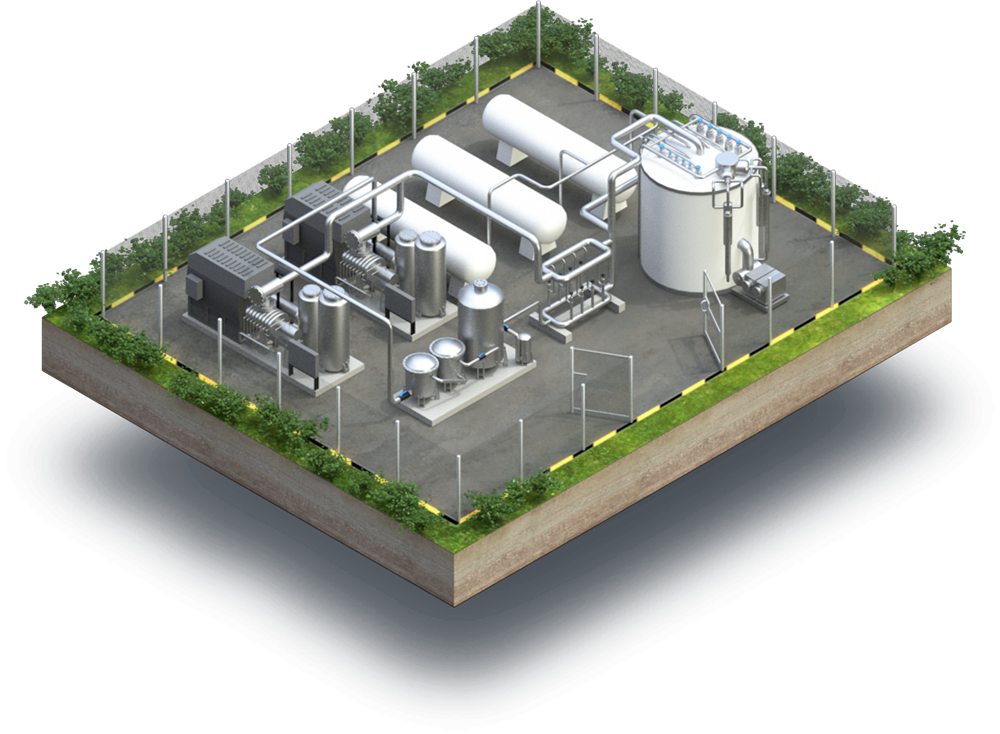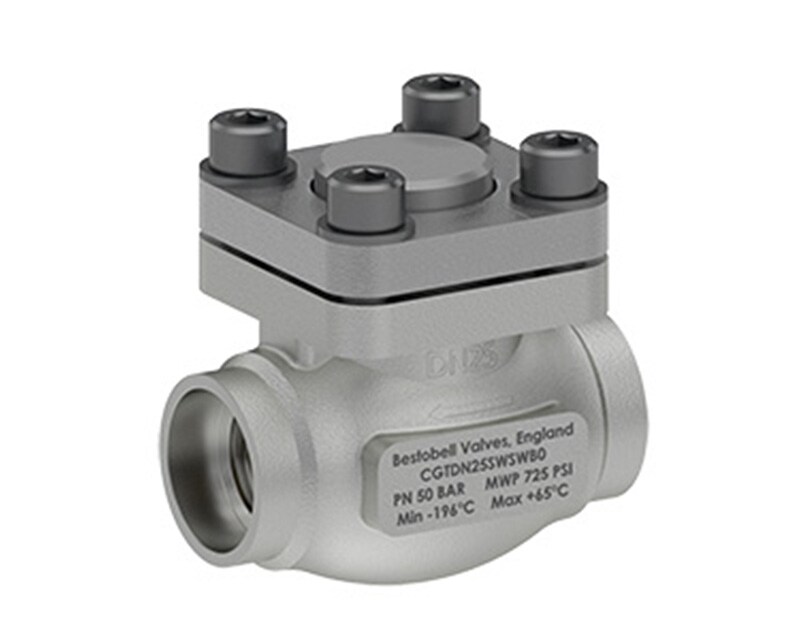INTRODUCTION

The liquefaction stage of hydrogen energy creation involves cooling hydrogen gas to extremely low temperatures (around -253°C or -423°F) to convert it into a liquid form. This process significantly reduces the volume of hydrogen—by approximately 800 times—making it much easier and more efficient to store and transport.
Liquefied hydrogen is essential for applications requiring high energy density, such as long-distance transportation and aerospace fuel. The liquefaction process requires advanced cryogenic technology and precise control systems to maintain hydrogen's purity and prevent losses, playing a critical role in enabling a scalable hydrogen economy.
HEATRIC PRINTED CIRCUIT HEAT EXCHANGERS

A key element in future energy processes, the Heatric PCHE is suited to a range of applications across the hydrogen value chain, including electrolyser cooling, hydrogen compression and liquefaction, and hydrogen storage systems. Offering a simplified safety case along with unrivalled thermal performance and pressure capability, each Heatric PCHE is designed bespoke to maximise system efficiency and heat transfer effectiveness using unique working fluid flow patterns.
FLEXISEAL® PISTON SEAL

The liquefaction stage of hydrogen energy creation involves cooling hydrogen gas to extremely low temperatures (around -253°C or -423°F) to convert it into a liquid form. This process significantly reduces the volume of hydrogen—by approximately 800 times—making it much easier and more efficient to store and transport. Liquefied hydrogen is essential for applications requiring high energy density, such as long-distance transportation and aerospace fuel. The liquefaction process requires advanced cryogenic technology and precise control systems to maintain hydrogen's purity and prevent losses, playing a critical role in enabling a scalable hydrogen economy.
- Flange seal
- Internal pressure
- Static and intermittently dynamic
- Spring-energized PTFE seal
- Low assembly force
C-RING METAL SEAL

C-ring seals play a crucial role in the liquefaction stage of hydrogen production by providing reliable sealing under extreme cryogenic temperatures and high-pressure conditions.
Their unique design allows them to maintain consistent contact and sealing force even as materials contract and expand due to temperature fluctuations. This ensures minimal leakage of liquid hydrogen, which is vital for safety, efficiency, and maintaining the purity of the hydrogen throughout the liquefaction process.
Engineered for durability and resilience, C-ring seals help optimize compressor performance and reduce maintenance needs, making them essential components in cryogenic hydrogen liquefaction systems.
FLUID CONVEYANCE FOR LIQUID HYDROGEN DISTRIBUTION

The use of fluid conveyance technology in hydrogen distribution
Parker’s Bestobell cryogenic valves are specifically designed to be used in cryogenic applications where extremely low temperatures are present. These valves are commonly used in the transportation of liquefied gases, including hydrogen, which must be kept at temperatures well below their boiling points to remain in their liquid form.
When transporting hydrogen, the use of Bestobell cryogenic valves is important to ensure the safety and efficiency of the transport process. These valves are designed to withstand the extreme temperatures and pressures that are involved in transporting cryogenic fluids, such as liquid hydrogen.
Featured cryogenic valves
Parker’s Bestobell cryogenic valves are also designed to be highly reliable and to provide tight shut-off, ensuring that the hydrogen remains safely contained within the transport vessel. The use of cryogenic valves in the transport of hydrogen is important to ensure that the hydrogen is transported safely and efficiently, without the risk of leaks or other safety issues.
These valves are an important component of any cryogenic transport system and can help to ensure the safe and reliable transport of hydrogen and other cryogenic fluids.
Related Products
- Globe Valves – Bestobell
- Lift Check Valves – Bestobell
- Pneumatically Actuated Globe Valves - Bestobell